गन्नेे (ईख) के उत्पाद तथा उनके अनेक उपयोग
Sugarcane is the second important industrial crop in India occupying an area of about 5 m.ha and over five million farmers are involved in the cultivation of sugarcane. Sugar industry contributes significantly to the rural economy as the sugar mills are located in the rural areas and provide large scale employment to rural population. India is the largest consumer and the second largest producer of sugar.
The sugarcane plant offers a huge potential, not only as the sucrose of a very important food but also as a source of energy and valuable commercial products from fermentation and chemical synthesis. Sugarcane is considered as one of the best converters of solar energy into biomass and sugar.
Sugarcane is a rich source of food (sucrose, jaggery and syrups), fiber (cellulose), fodder (green top, bagasse, molasses) fuel and chemicals (bagasse molasses and alcohol). During the process of sugar production, the main by-products of cane sugar industry are bagasse, molasses and pressmud. The other co-products and by-products of less commercial value are green leaves, green tops, trash, boiler ash and effluents generated by sugar industry and distillery.
There are many other industries which are based on sugarcane by diversification and utilization of co-products and by- products of the sugar industry, instead of merely depending on production of sugar.
Thus the effort should be for integral utilization of sugarcane, its co-products and by-products to produce many value added products, to derive maximum benefits from sugarcane crop. At present, sugarcane is used as food (sugar), fiber (cellulose), fuel (bagasse) and fodder (green tops, trash, molasses etc.) crop. Brief information on the economic importance and utilization of various by-products of sugarcane in India is given below:
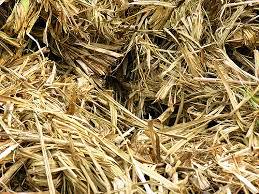 Bagasse : Uses and its based products
Bagasse : Uses and its based products
Bagasse is the dry pulpy fibrous residue that remains after sugarcane stalks are crushed to extract their juice. The proportion of bagasse produced per 100 tonnes of cane crushed varies from 25 to 32 tonnes, usually lying around 27-28%.
The fresh mill bagasse contains 48-50% water, 2.5-3.5% dissolved solids or Brix and 46-48% fibre. The fibre constitutes the insoluble cellulosic matter of sugarcane. Some of the applications of bagasse is given below:
Fuel:
Bagasse is often used as a primary fuel source for sugar mills. When burned in quantity, it produces sufficient heat energy to supply all the needs of a typical sugar mill.
Bio-electricity from bagasse cogeneration:
Electric power can be generated from bagasse, by installing high pressure boilers and special type of steam turbine. It is possible to generate about 450 kWh electricity from one metric ton of bagasse.
At present, as many as 147 sugar mills in India have co-generation projects to generate total power to the extent of 3,067 MW. After meeting their captive power requirement in these mills, they are supplying as much as 1,900 MW of surplus electric power to the National Grid.
It is estimated that the sugar mills in India have potential to generate as much as 7,000 MW of electric power and have potential to supply about 3,000 MW of surplus electric power to the National Grid in the future years.
Paper from Bagasse:
Bagasse is commonly used as a substitute for wood in many tropical and subtropical countries such as India, China, Colombia, Iran, Thailand, and Argentina for the production of pulp, paper and board. There are already many bagasse based plants to produce different kind of papers such as kraft paper, white writing and printing papers, newsprint, etc.
Bagasse pulp is used in the manufacture of bags and card board of corrugated wrapping and writing paper and toilet papers. In India, Tamil Nadu Newsprints Limited (TNPL) is producing excellent grade of newsprint from bagasse.
One hectare of sugarcane can produce, annually, about five tonnes of fibre for pulp and paper production, twice as much as that produced by one hectare of wood with the same management. The renewal period is fifteen times shorter for sugarcane.
Paper from sugarcane bagasse has advantages over the traditional papers made by cutting down trees viz., the main advantage being that we need not have to cut down trees. It is cheaper, and renewable. Some of the paper products for which sugar waste paper are preferred are napkins, tissue paper, disposable food containers, plates, bowls, trays, etc.
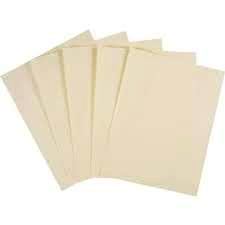
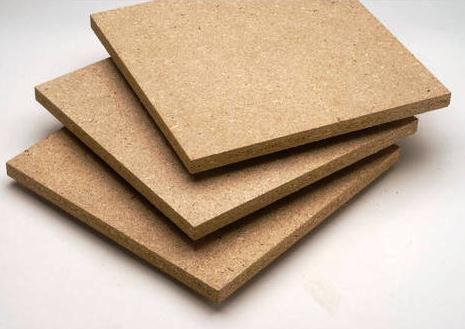
Boards or Agglomerated products:
Board manufacturing industries normally use forest woods for manufacturing boards. As cutting of trees reduce forest cover and subsequently climate change issues in the environment, board manufacturing industries need an alternative of forest wood. And in this direction bagasse is the most suitable raw material, which can be extensively used.
Bagasse-based composites offer potential as the core material for laminated floors, replacing high-density and expensive wood fiberboard. During recent years, considerable progress has been made in India to use bagasse for manufacture of agglomerated products as mentioned below:
- Panel or Insulating Board: It is made by treating bagasse with hot water or steam under pressure in rotary digester. The pulp is then washed and fed into board machines from which it emerges as a continuous wet mat. It is then passed through rollers to remove as much water as possible, cut into sheets and dried. The finished product does not wrap and takes paint well. It is an efficient insulator of heat and can be made resistant to insects and fire by impregnation with appropriate chemicals. It is used as ceiling material and wall partitioning.
- Particle Board: It is much denser and harder than insulating board, made in dry process by binding the bagasse fiber with a resin. It can be made water proof and used for making all kinds of furniture, cabinets, cupboards, racks, almirahs, partition boards, table tops, etc. There are 12 plants in India to produce particle boards making use of the surplus bagasse of the neighboring sugar mills as fibrous raw material.
- Bagasse-Cement Board: These types of boards are now very well accepted as construction material due to their excellent physical properties viz., resistance to fire, fungi, insects and weather extremes. These types of boards are generally obtained from the mixture of ligno-cellulosic fibers with Portland cement, calcinated magnesite or gypsum.
Biogas production from bagasse:
Bagasse can be used for the production of sludge or biogas (a mixture of carbon dioxide and methane) by fermentation through inoculation or addition of farm manure. The gas produce (calorific value 5,500 kcal/m3) usually contains 60–65% methane, 30–35% of carbon dioxide and small quantities of hydrogen. Bagasse can also be used as fuel in producer gas-plants. The producer gas from bagasse contains 60% nitrogen, 17% carbon mono-oxide and 6% hydrogen and has calorific value of 1,200 kcal/kg.
Production of Furfural:
In its pure state, furfural is a colorless or yellow oily liquid with the odour of almonds, but upon exposure to air it quickly becomes yellow then brown and finally black, it is commonly known as furfuraldehyde. It is an important organic chemical, produced from agro industrial wastes and residues containing carbohydrates known as pentosans.
As no commercial synthetic routes have been found so far, all furfural manufacturing activity is based on pentosan containing residues that are obtained from the processing of various agricultural (from bagasse) and forest products.
It has a limited market in highly industrialized countries, mainly for the productions of nylon, butadiene. In commercial terms, the most important intermediate derived from furfural is furfuryl alcohol. Some new medicines from cane lignin have been developed in Cuba, there is scope to explore this sector in India.
Use as animal feed:
However, low digestibility, high lignin (20%) and very low nitrogen content of raw bagasse limit the use as animal feed directly, it is possible to improve its palatability and digestibility and to supplement it to increase energy, protein and mineral value so that a cheaper alternate feed could be made available to the small farmers and landless labourers.
Bagasse is converted into cattle feed by mixing it with molasses and enzymes (such as bromelain) and fermenting it. It is marketed in Thailand, Japan, Malaysia, Korea, Taiwan and Middle East and Australia.
Production of ethanol:
The cellulosic residue of sugarcane crop viz., bagasse could also be used for ethanol production by simultaneous saccharification-cum-fermentation (SSF) route using enzymatic or acid hydrolysis technology. This route could yield approximately 200 l of ethanol/ton bagasse processed, a microbial consortium is being developed to economize the process.
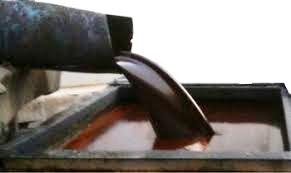 Molasses: uses and its based products
Molasses: uses and its based products
Molasses is a viscous final effluent obtained in the preparation of sugar by repeated crystallization. It is the residual syrup from which no crystaline sucrose can be obtained by simple means.
Molasses as fertilizer:
Molasses is being used mainly as an organic fertilizer because in many cases it happens to be a cumbersome surplus. However, there seems to be the backing of unanimity about the utility of molasses as a soil fertilizer. It is however, maintained that for every 48 metric tonne of molasses spread in the field, the land receives the following fertilizer. 5.2 Kg N, 2.5 Kg P2O5 and 51.3 Kg K2
Molasses as animal feed:
The value of molasses as feed for livestock has been known since sugar was first manufactured. The most important characteristics of cane molasses as feed is its richness in carbohydrates mainly in the form of sugar molasses which also contains small amounts of protein and very low proportions of calcium and phosphorous, but very high proportion of potassium.
It also contains traces of the vitamins of B-complex group and elements like cobalt, boron, iodine, copper, manganese and zinc. Molasses can be used also as feed for pigs and poultry.
In India, the first animal feed from molasses was made at the National Sugar Institute, Kanpur. (UP). The product was named as ‘Bagomolasses’. Subsequently, improved plants have been put up by Pohatas industries, Dalmia Nagar, Bihar and Ugar sugar works limited, Ugarkhurd, Belgaum District in Karnataka State. This was followed by many sugar factories in Karnataka and Maharashtra.
Utilization of molasses for distilling industry:
Molasses constitutes the main raw material for distilling industries. In the field of distilling industries two processes are mainly involved. A. Fermentation. B. Distillation.
Fermentation: It is a process which brings about chemical changes in an organic substrate (substance) through the action of bio-chemical catalysts. It is a metabolic process. The biochemical catalysts/ enzymes are micro-organisms like yeasts, moulds and bacteria. Historically, fermentation was generally associated with the conversion of sugar into ethyl alcohol and carbon dioxide.
Molasses can be used in other fermentation industries also. Vinegar and acetic acid are two important products from molasses.
Vinegar is a condiment prepared from sugar or starchy material by alcoholic and acetous fermentation. The main constituent of vinegar is acetic acid. There are other derivatives of acetic acid like cellulose acetate used for garments and home furnishing acetic, anhydride vinyl acetate, acetamide, etc.
Butanol acetone is another important fermentation product. This can be obtained from molasses. It is used in the manufacture of explosives. Acetone is highly inflammable. It can be produced by the process of fermentation of cane molasses.
Acetone is used as plastisizer, dyeing agent, detergent and cleaning agent in electronics industry. Lactic acid, a colourless, odourless, syrupy liquid is mixable in water, alcohol and ether. Lactic acid is used in the food, pharmaceuticals and plastics industries.
Citric acid is another important fermentation product of molasses. It is used in Food and Beverage industries (60%), Pharmaceutical (16%), Chemical industries (15%), Cosmetics and toiletries (3%) and other (6%).
Distillation industries:
Distillation is a process of evaporation and re-condensation used for separating liquids into various fractions according to their boiling points or boiling ranges. The major output from the distillation processes is one or the other type of alcohol.
a. Rum: Rum is generally defined as an alcoholic distillate from the fermentation of sugarcane juice or sugarcane molasses in which alcohol by volume percentage is in the range of 43.15 to 52.50.
Yeast is added to fresh molasses for mashing operation which consists of dilution of molasses and addition of ammonium sulphate, sulphuric acid and more rarely phosphorous. Finally, the mash substance is subjected to a series of simple distillation and condensation. Rum is usually allowed to age to improve flavour, colour and aroma and it is cured by adding certain herbs, sugar and some oils;
b. Ethyl Alcohol: The manufacturing of ethyl alcohol is similar to that of Rum. In the beginning, molasses is diluted with water with about 14 to 18 percent sugar concentration and ammonium sulphate, phosphoric acid, sulphuric acid and sodium chloride. The mash is seeded with yeast culture in the proportion of 5 to 8 percent by volume and fermentation time is between 30 to 72 hours depending on other factors.
The fermented liquor, which is known as the ‘beer’ or ‘wine’ contains about 6 to 9 percent alcohol. The fermented mash or beer distilled and the alcohol obtained is further purified in a rectifiying column. It is known as rectified spirit.
The industrial alcohol is mainly used as fuel, as antiseptic and cleaning agent, as solvent for dyes, drugs, soaps and in many other chemical processes. Absolute alcohol, if denatured, can be used as fuel for internal combustion engine by mixing with 70 to 80 percent petrol.
Ordinary Denatured Spirit (O.D.S) is mainly used in hospitals, home and in the preparation of polish. One tonne of sugarcane will produce 72-75 litres of ethanol. Likewise, a tonne of molasses produces about 220-250 litres of ethanol. Alcohol has its own by-products and derivatives. The main by-products are.
- a. Carbon dioxide: This can be used for carbonated beverages, fire fighting and food preservation. Fermentation of 1000 kg of molasses produce 160 kg of CO2,
- b. Fuel oil: This is a mixture of higher alcohols which are obtained at high temperature, mainly comprising Ethyl alcohol, n - propyl alcohol - Isobutly alcohol -Amyl and Isoamyl alcohol. It is used mainly as liquor solvent.
- c. Glycerol: This can be used in cosmetics, drugs, tobacco, food and beverages and other related industries.
By-products of molasses:
1. Dextran: It is a by-product of molasses which is used as a stabilizer for ice cream, sugar syrup and other confectionary. It can be used in oil well drilling.
2. Aconitic acid: It is another by-product of molasses used mainly in chemical industry as plastisizer, wetting agent and flavouring agent.
3. Itaconic acid: It is another fermentation production of molasses which is used for thermoplastics, and production of transparent material.
4. Monosodium Glutamate: It is one more molasses by-product and is used as flavouring intensifier.
5. Carbon Dioxide: Carbon dioxide as well as alcohol is produced when molasses in fermented by Saccharomyces cereviseae. The yield of CO2 is 16% by weight of molasses and between 70 and 75% of it can be recovered. The carbon dioxide produced is used as cooling agent and in the manufacture of carbonated drinks
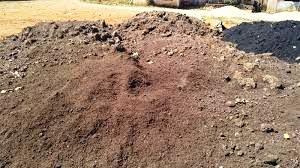 Pressmud or Filter mud: Uses and products
Pressmud or Filter mud: Uses and products
In the production of sugar, sugarcane juice is subjected to a process of purification called clarification. For this, methods of carbonation or sulphitation are used. In this process a bulky precipitate is formed.
The juice is filtered through vaccum filters or filler process and the residual waste material is known as pressmud. It contains some sugar. On weight basis it is about 7 to 8 percent of cane crushed.
As fertilizers: Pressmud is rich in calcium sulphite and calcium phosphate. It also contains small quantities of nitrogen, phosphate and potassium. It contains 20 to 25 percent organic matter and about 45 percent lime on dry basis naturally. It is very useful as a fertilizer in acidic soils.
As animal feed: Dried cakes can be used in combination with cane molasses and tops, as an animal feed.
Miscellaneous uses: It can be used for producing building lime, but it involves the problem of waste disposal. It can also be used for producing metal polishing powder, board chalk, and tooth powder.
Sugarcane tops, leaves and trash
At the time of harvesting sugarcane crop, the tops of the cane are removed and the stems are cleaned of their leaves (trash). On an average, the cane tops and trash constitute 25 to 35 percentage of the cane weight in the field. Cane tops are a valuable fodder for the cattle.
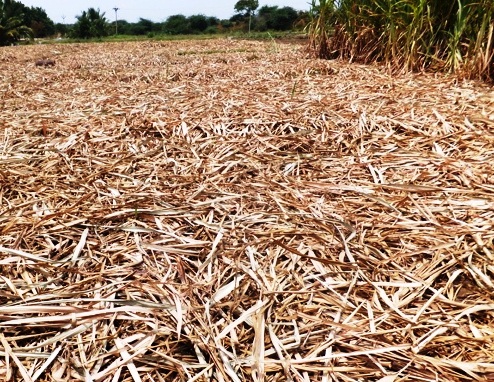
The green leaves of the tops can be used for extracting leaf protein but because of the indispensability of readily available green fodder, this is not being done at present. The cane trash is also useful for thatching the huts as also for camp fire fuel and compost.
Similarly, cane trash can be used for producing cardboard or wrapping paper. Composted cane tops and leaves is of better manurial qualities than any other organic fertilizer.
Scope of by-products based industries in India
WHO pointed that rise in the problem of global obesity is due to high sugar consumption, in particular through sugar sweetened beverages. If countries discourage their citizens from consuming sugar, sugar industries and sugarcane growers would face huge negative impact in many aspects. Hence, alternate uses of sugarcane should be explored and strengthened to sustain the industry in the future.
As far as bagasse based industries are concerned, there is a great scope to set up plants to produce market pulp, newsprint, writing and printing papers, particle board, MDF, cattle feed, and chemicals like furfural, etc. as there is a good demand for all these products in the country itself. Moreover, it will enormously reduce the cutting of trees for the above purposes.
Molasses production in India vary from 10–12 million tons per annum which is a valuable source of ethanol and other chemicals. As far as molasses- based industries are concerned, the ideal solution would be to set up distilleries to produce industrial alcohol, extra-neutral alcohol and potable spirits.
The demand of molasses is likely to increase sharply due to ongoing gasohol program, especially when 10% or higher level of ethanol blending will be recommended. In recent years, with the increase in standard of living, the per capita energy consumption has increased substantially. The world energy consumption is expected to increase multifold by 2025 with much of the energy growth occurring in rapidly expanding economies.
Fossil fuels such as coal, oil and natural gas currently supply 86% of the world’s energy, and that will be used up in the foreseeable future. So the only way is to increase the energy availability through alternate sources of energy.
There are already many industries working in India based on the by-products of the sugar industry. As India is the second largest producer of sugarcane, it has great potential to exploit the sugarcane based by products in the future years.
Authors:
Rajula Shanthy1 and L. Saravanan2
1- Principal Scientist (Agrl. Extension), 2-Senior Scientist (Entomology)
ICAR-Sugarcane Breeding Institute, Coimbatore 641007
Email:
